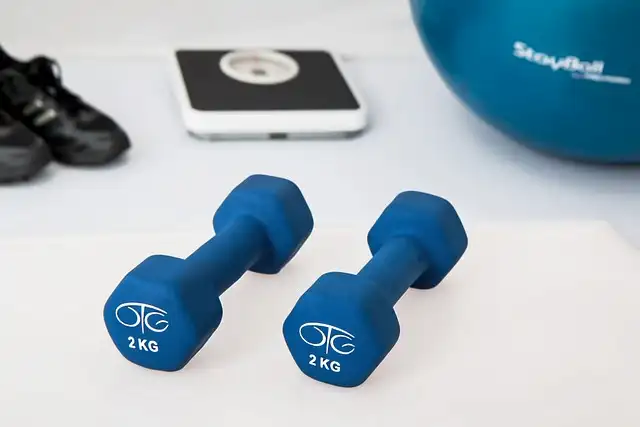Muscle Toning: A Comprehensive Guide
When it comes to achieving a fit and toned body, exercise and diet go hand in hand. In this article, we will explore the most effective exercises, diets, tools, and habits for muscle toning and weight loss.
Table of Contents
- Exercises for muscle toning and weight loss
- Diet and nutrition for muscle toning and weight loss
- Tools and equipment for muscle toning and weight loss
- Lifestyle and habits for muscle toning and weight loss
- Body composition and weight loss
- Supplements for muscle toning and weight loss
- Common mistakes and misconceptions about muscle toning and weight loss
1. Exercises for Muscle Toning and Weight Loss
Regular exercise is vital for toning your muscles and achieving weight loss goals. The following exercises are effective for achieving these results:
Cardiovascular exercises
Cardiovascular exercises, also known as aerobic exercises, are essential for toning muscles and losing weight. These exercises increase the heart rate and improve cardiovascular health, leading to improved stamina and endurance. Examples of cardiovascular exercises include running, swimming, cycling, and rowing. These exercises burn calories, making them an effective way to lose weight and maintain a healthy body weight.
Cardiovascular exercises also have numerous health benefits, including reducing the risk of heart disease, diabetes, and high blood pressure. Aim for at least 30 minutes of cardiovascular exercise per day to achieve optimal results and improve overall fitness levels.
Strength training exercises
Strength training exercises are a crucial part of any muscle-toning and weight loss program. These exercises use resistance to build muscle and burn fat, helping to increase your metabolism and improve your overall health. Common strength training exercises include weight lifting, bodyweight exercises, and resistance band training.
Weight lifting is the most popular form of strength training and can be done with free weights, weight machines, or kettlebells. Bodyweight exercises like push-ups, pull-ups, and squats are an effective way to build strength and muscle without any equipment. Resistance band training uses elastic bands to provide resistance and can be easily done at home or on the go. By incorporating strength training exercises into your workout routine, you can effectively tone your muscles and achieve your weight loss goals.
Resistance band exercises
Resistance band exercises are an excellent way to build strength and tone muscles without the need for heavy weights or gym equipment. These elastic bands come in various sizes and strengths, allowing for a wide range of exercises that target specific muscle groups. Resistance band exercises can be done standing, sitting, or lying down, making them versatile and adaptable to any fitness level.
They are also low-impact and can be used for rehabilitation exercises or to warm up before a more intense workout. Some popular resistance band exercises include bicep curls, tricep extensions, shoulder presses, and squats. Incorporating resistance bands into your fitness routine can add variety and challenge to your workouts.
High-intensity interval training (HIIT)
High-intensity interval training (HIIT) is a popular exercise technique that involves short bursts of intense activity followed by brief periods of rest. This type of training can be highly effective for burning calories and building muscle, making it a great option for those looking to achieve weight loss and toning goals. HIIT workouts can vary in duration, but typically last between 20 to 30 minutes.
During the high-intensity intervals, you work at your maximum capacity, pushing your heart rate and breathing rate up. The rest periods allow your body to recover and prepare for the next interval. HIIT can be done with a variety of exercises, including sprints, jumping jacks, and burpees, making it a versatile and challenging workout option.
Bodyweight exercises
Bodyweight exercises are a great way to build strength, flexibility, and endurance without any equipment. These exercises use your own body weight to create resistance, making them effective for toning your muscles and achieving weight loss goals. Push-ups, squats, lunges, and planks are just a few examples of bodyweight exercises that can be done anywhere, making them perfect for a quick workout at home or on-the-go.
Additionally, bodyweight exercises can be modified to suit different fitness levels, making them accessible for beginners and challenging for more advanced athletes. By incorporating bodyweight exercises into your fitness routine, you can achieve a fit and toned body without the need for expensive gym equipment.
Plyometric exercises
Plyometric exercises, also known as jump training, are a high-intensity form of exercise that can improve strength, power, and overall fitness. These exercises involve explosive movements that engage multiple muscle groups and challenge the body in new ways. Some common plyometric exercises include box jumps, jump squats, and burpees. Plyometric exercises are beneficial for athletes, as they improve speed, agility, and jumping ability.
They also increase bone density and improve cardiovascular health. However, plyometric exercises can be challenging and high-impact, so it’s important to work with a trainer or start with basic exercises and gradually increase intensity. With proper technique and guidance, plyometric exercises can be an effective addition to any workout routine.
2. Diet and Nutrition for Muscle Toning and Weight Loss
A healthy diet is key to achieving your fitness goals. Here are some tips for a diet that supports muscle toning and weight loss:
High protein diet
A high protein diet is a popular choice for those looking to tone their muscles and lose weight. Protein is essential for building and repairing muscle tissue, making it a crucial component of any muscle toning program. Foods high in protein include lean meats, fish, eggs, dairy, legumes, and nuts. A high protein diet can also help reduce appetite and promote feelings of fullness, making it easier to stick to a calorie-controlled diet.
However, it’s important to balance protein intake with other macronutrients such as carbohydrates and fats, as well as consume a variety of protein sources to ensure adequate intake of essential amino acids. It’s also important to consult with a healthcare professional to ensure that a high protein diet is appropriate for your individual needs and goals.
Low-carb diet
A low-carb diet is a popular diet trend that involves reducing carbohydrate intake and increasing protein and fat consumption. This type of diet can be effective for weight loss and muscle toning, as it encourages the body to burn stored fat for energy instead of relying on carbohydrates. Some foods to avoid on a low-carb diet include sugary drinks, bread, pasta, and potatoes.
Instead, focus on consuming protein-rich foods like meat, eggs, and nuts, along with healthy fats like avocado and olive oil. While a low-carb diet can be effective, it’s important to work with a healthcare professional to ensure you’re getting all the necessary nutrients for optimal health.
Balanced diet
A balanced diet is crucial for achieving muscle toning and weight loss goals. This type of diet includes a variety of foods from all major food groups, including fruits, vegetables, whole grains, lean proteins, and healthy fats. A balanced diet provides the body with the necessary nutrients to build muscle and burn fat.
It also supports overall health and well-being, reducing the risk of chronic diseases such as heart disease and diabetes. To achieve a balanced diet, it’s important to plan meals in advance and focus on whole, minimally processed foods. Avoiding excessive intake of sugary or high-fat foods can also aid in achieving a balanced diet.
Pre-workout snacks
Pre-workout snacks are an important aspect of a healthy diet for muscle toning and weight loss. Eating a small, nutritious snack before a workout can help boost energy levels and provide the necessary nutrients for an effective workout. Some examples of pre-workout snacks include a banana, a handful of nuts, or a protein shake.
It’s important to choose snacks that are high in protein and complex carbohydrates, which can help fuel the body and provide sustained energy. However, it’s also important to avoid heavy or greasy foods, as these can cause digestive discomfort during exercise. By incorporating pre-workout snacks into your diet, you can optimize your workouts and achieve your fitness goals more effectively.
Post-workout recovery meals
After a workout, it’s essential to refuel your body with the right nutrients to aid in muscle recovery and growth. Post-workout recovery meals should include a balance of carbohydrates and protein to replenish glycogen stores and repair muscle tissue. Good sources of carbohydrates include fruits, vegetables, and whole grains, while protein can be found in foods like eggs, chicken, and beans.
Some examples of post-workout meals include a chicken and quinoa bowl with roasted vegetables, a spinach and berry smoothie with protein powder, or a tofu stir-fry with brown rice. It’s important to eat within 30 minutes to an hour after your workout for optimal recovery and to avoid feeling overly fatigued. With proper nutrition, you can maximize the benefits of your workouts and achieve your muscle toning and weight loss goals.
Hydration
Staying hydrated is crucial for muscle toning and weight loss, as water plays an important role in many bodily functions. Adequate hydration can help regulate body temperature, maintain electrolyte balance, and transport nutrients to cells. It can also help prevent overeating, as thirst is sometimes mistaken for hunger.
To stay properly hydrated, aim to drink at least eight glasses of water a day and more if you’re exercising or in hot weather. Other sources of hydration include fruits and vegetables, soups, and broths. Avoid sugary drinks and caffeine, as they can dehydrate the body. By prioritizing hydration as part of a healthy diet, you can support your fitness goals and improve overall health.
3. Tools and Equipment for Muscle Toning and Weight Loss
Using the right tools and equipment can help you achieve your fitness goals more effectively. Here are some examples:
Dumbbells
Dumbbells are versatile and effective tools for muscle toning and weight loss. They come in different sizes and weights, allowing for a wide range of exercises that target specific muscle groups. Dumbbell exercises can be done at home or in the gym, and are suitable for beginners and advanced fitness enthusiasts alike. They can be used for a full-body workout or to isolate specific muscle groups like the biceps, triceps, and shoulders. Dumbbells also help improve balance and stability, as they require the use of stabilizing muscles. Additionally, using dumbbells can increase bone density and help prevent osteoporosis. Overall, incorporating dumbbells into your workout routine can help you achieve your fitness goals and improve your overall health.
Kettlebells
Kettlebells are a versatile and effective tool for muscle toning and weight loss. They are essentially cast-iron weights with a handle, making them easy to grip and use in a variety of exercises. Kettlebell workouts are known for their ability to burn calories and build strength and endurance. They can be used for both cardiovascular and strength training exercises, including swings, snatches, and Turkish get-ups.
Kettlebells challenge the body in unique ways, as they require stability and coordination to use properly. They are also convenient for home workouts, as they take up little space and can be stored easily. Incorporating kettlebells into your fitness routine can help you achieve your muscle toning and weight loss goals efficiently and effectively.
Resistance bands
Resistance bands are a versatile and effective tool for muscle toning and weight loss. These bands are made of elastic material and come in a variety of sizes and resistance levels, making them suitable for people of all fitness levels. Resistance bands can be used for a range of exercises, from upper body workouts like bicep curls and tricep extensions, to lower body exercises like squats and lunges.
They can also be used for stretching and mobility work. Resistance bands are lightweight and portable, making them a great option for home workouts or on-the-go training. Additionally, they are low-impact, reducing the risk of injury while still providing an effective workout. Incorporating resistance bands into your exercise routine can help you build strength, improve flexibility, and achieve your fitness goals.
Yoga mats
Yoga mats are a must-have accessory for anyone practicing yoga or other floor-based exercises. These mats provide a comfortable and supportive surface for your hands, feet, and body during poses and stretches. A good quality yoga mat can prevent slips and falls, reduce impact on joints, and improve overall balance and stability. When choosing a yoga mat, it’s important to consider the thickness, texture, and material.
Thicker mats offer more cushioning, while textured mats provide better grip. Materials like natural rubber or cork are eco-friendly options that are also durable and non-slip. Investing in a high-quality yoga mat can improve your overall yoga experience and help you achieve your fitness goals more comfortably and safely.
Jump ropes
Jump ropes are a simple yet effective tool for muscle toning and weight loss. They provide a full-body workout that improves cardiovascular health, endurance, and coordination. Jumping rope also burns a significant number of calories, making it an efficient form of exercise. Additionally, using a jump rope can improve bone density and balance. Jump ropes are affordable and can be used at home, outdoors, or in the gym.
They come in different sizes and weights to accommodate different fitness levels and goals. However, it’s important to use proper form to prevent injury and start with shorter sessions before gradually increasing intensity. Overall, jump ropes are a versatile and convenient tool for achieving your fitness goals.
Treadmills
Treadmills are one of the most popular pieces of fitness equipment for home and gym use. They offer a convenient way to burn calories and improve cardiovascular health by walking, jogging, or running indoors. Treadmills provide a controlled environment that allows for precise speed, incline, and distance adjustments. Some treadmills also offer features like heart rate monitoring and pre-programmed workouts.
Using a treadmill can help to increase endurance, improve balance, and reduce the risk of injury compared to outdoor running on uneven surfaces. However, it’s important to use proper form and start with lower speeds and inclines to avoid overexertion and strain. Treadmills can be a valuable tool for achieving muscle toning and weight loss goals.
4. Lifestyle and Habits for Muscle Toning and Weight Loss
Achieving a fit and toned body is not just about exercise and diet, but also about cultivating the right habits and lifestyle. Here are some habits that can help:
Consistency and discipline
They are two essential habits for achieving muscle toning and weight loss goals. Consistency refers to the act of sticking to a regular exercise routine and healthy eating habits over a period of time. By doing so, the body adapts and begins to show visible results in terms of improved muscle tone and weight loss.
Discipline, on the other hand, involves setting and following a strict routine, avoiding unhealthy foods and temptations, and making exercise a priority. Both consistency and discipline require motivation, dedication, and focus, and can be challenging to maintain in the long term. However, by setting achievable goals and tracking progress, it’s possible to develop these habits and achieve the desired results.
Getting enough sleep
Getting enough sleep is an essential part of achieving muscle toning and weight loss goals. During sleep, the body repairs and rebuilds muscle tissue, and regulates hormones that control appetite and metabolism. Lack of sleep can lead to decreased energy levels, increased cravings for unhealthy foods, and reduced physical performance. Adults should aim for seven to nine hours of quality sleep each night.
Establishing a consistent sleep schedule and creating a relaxing bedtime routine can help improve sleep quality. Avoiding caffeine and electronics before bed, keeping the bedroom cool and dark, and using comfortable bedding can also promote restful sleep. Prioritizing sleep as part of a healthy lifestyle can improve overall well-being and aid in muscle toning and weight loss.
Reducing stress levels
Reducing stress levels is an important habit to cultivate for achieving muscle toning and weight loss goals. Stress can lead to unhealthy habits such as overeating, lack of sleep, and decreased motivation for exercise. Chronic stress can also lead to elevated levels of cortisol, a hormone that promotes the storage of fat in the body.
Therefore, it’s essential to incorporate stress-reducing activities into your daily routine, such as meditation, yoga, or deep breathing exercises. Regular exercise is also an effective way to reduce stress levels, as it releases endorphins, which promote feelings of well-being and relaxation. Making time for relaxation and stress-reducing activities can help to improve overall health and increase the likelihood of achieving fitness goals.
Tracking progress
Tracking progress is an essential habit for achieving muscle toning and weight loss goals. When you track your progress, you can monitor your body’s changes and adjust your diet and exercise routine accordingly. This habit helps to keep you motivated and accountable, and can also help you to identify patterns and areas for improvement.
Some effective ways to track progress include measuring body weight, body fat percentage, and muscle mass, taking body measurements, and keeping a workout and food diary. It’s important to track progress regularly and set realistic goals to avoid becoming discouraged. By making tracking progress a regular part of your routine, you can improve your chances of success in achieving your fitness goals.
Setting achievable goals
Setting achievable goals is an important habit for anyone looking to achieve muscle toning and weight loss goals. It’s crucial to set realistic goals that are specific, measurable, and attainable, rather than setting broad or unrealistic targets. Setting achievable goals helps to create focus and motivation, as well as providing a roadmap to track progress and celebrate successes along the way.
It’s also important to set short-term goals that can be achieved in a few weeks or months, as well as long-term goals that may take several months or years to achieve. Setting goals can help to keep individuals accountable and committed to their fitness routine, making it more likely for them to see long-term success.
Staying motivated
Staying motivated is an essential habit for achieving muscle toning and weight loss goals. Motivation provides the drive and commitment needed to maintain a healthy lifestyle and stick to a fitness routine. One way to stay motivated is by setting specific, achievable goals and tracking progress. Celebrating small victories along the way can also boost motivation and confidence.
Finding an accountability partner or joining a fitness community can also provide support and encouragement. Additionally, incorporating enjoyable activities into a fitness routine, such as dancing or hiking, can help to maintain motivation and avoid boredom. Lastly, focusing on the benefits of a healthy lifestyle, such as increased energy and improved mood, can provide intrinsic motivation to maintain good habits.
5. Body Composition and Weight Loss
Understanding your body composition is important for achieving your fitness goals. Here are some terms you should know:
Body fat percentage
Body fat percentage is a measure of the amount of fat in your body compared to the total body weight. It is an important component of body composition, along with muscle mass and bone density. Knowing your body fat percentage can help you understand your overall health and fitness level, as excess body fat has been linked to health problems such as heart disease and diabetes.
It can also help to track progress towards weight loss or muscle toning goals. Body fat percentage can be measured through various methods, such as skinfold calipers or bioelectrical impedance analysis. It’s important to note that ideal body fat percentage varies depending on factors such as age and gender, and that a healthy range may differ for athletes or bodybuilders. Understanding body fat percentage is an important step towards achieving optimal health and fitness.
Muscle mass
It is the amount of muscle tissue in your body, and it’s a crucial component of overall body composition. Muscle mass is important for several reasons, including increasing metabolism and burning calories, improving athletic performance, and reducing the risk of injury. Building muscle mass requires resistance training, such as weightlifting or bodyweight exercises, and proper nutrition.
The more muscle mass you have, the more calories your body will burn, even at rest. It’s essential to maintain a healthy balance of muscle mass and body fat for optimal health and fitness. Too much body fat can increase the risk of health problems, while too little muscle mass can lead to weakness and reduced mobility. Understanding and monitoring muscle mass is essential for achieving muscle toning and weight loss goals.
Metabolism
Metabolism refers to the chemical processes that occur within the body to convert food into energy. It’s an essential process for maintaining bodily functions, including muscle contraction, digestion, and breathing. The rate at which the body metabolizes food and burns calories is known as the metabolic rate. A higher metabolic rate means the body burns more calories, even when at rest, making it easier to achieve weight loss and muscle toning goals.
Factors that affect metabolism include age, sex, body size, and genetics. Regular exercise, especially strength training, can help to increase metabolism by building muscle mass. Eating a balanced diet and staying hydrated can also support a healthy metabolism. Understanding metabolism is important for designing an effective fitness and nutrition plan to achieve your desired body composition.
Caloric deficit
Caloric deficit is a term used to describe the state in which your body is burning more calories than it is consuming. This is a crucial aspect of weight loss and muscle toning because it forces your body to use stored fat for energy. To achieve a caloric deficit, you can either consume fewer calories than your body needs, or burn more calories through exercise.
However, it’s important to create a moderate caloric deficit rather than an extreme one, as consuming too few calories can lead to muscle loss and other negative health effects. It’s also essential to maintain proper nutrition while in a caloric deficit, ensuring that your body is getting enough essential nutrients to support your fitness goals. By understanding and maintaining a caloric deficit, you can effectively achieve your weight loss and muscle toning goals.
Resting metabolic rate
Resting metabolic rate (RMR) refers to the number of calories your body burns while at rest. This includes the energy used to keep your organs functioning, maintain body temperature, and repair cells. RMR is affected by factors such as age, gender, and body composition. Muscle tissue requires more energy to maintain than fat tissue, meaning that individuals with higher muscle mass typically have a higher RMR.
Understanding your RMR can be helpful for weight loss and muscle toning goals, as it provides a baseline for daily caloric needs. By knowing your RMR, you can adjust your diet and exercise routine to create a caloric deficit or surplus, depending on your goals. RMR can be measured through specialized equipment or calculated using formulas based on height, weight, and other factors.
Basal metabolic rate
Basal metabolic rate (BMR) refers to the number of calories your body burns at rest to maintain basic functions such as breathing, blood circulation, and cell production. This rate varies depending on factors such as age, gender, body size, and muscle mass. Knowing your BMR can help you to determine the number of calories you need to consume to maintain, gain, or lose weight.
A higher muscle mass generally results in a higher BMR, as muscles require more energy to maintain than fat. Therefore, strength training exercises that build muscle can increase your BMR and improve your overall fitness. Understanding your BMR is a valuable tool for achieving muscle toning and weight loss goals.
6. Supplements
Supplements can be a helpful addition to your diet and exercise routine, but they should not be relied upon as the sole means of achieving your fitness goals. Here are some supplements that may be useful:
Protein powder
Protein powder is a popular supplement used by many athletes and fitness enthusiasts to support muscle growth and recovery. It provides a concentrated source of protein, which is essential for building and repairing muscle tissue. Protein powder is available in a variety of forms, including whey, casein, and plant-based options such as pea or soy protein.
It can be consumed as a shake or added to smoothies, oatmeal, or other foods to increase protein intake. However, it’s important to choose a high-quality protein powder and to use it as a supplement to a balanced diet, rather than as a replacement for whole foods. Additionally, protein powder may not be suitable for those with certain allergies or medical conditions, so it’s important to consult a healthcare professional before using it.
Creatine
Creatine is a naturally occurring compound that is stored in the muscles and used for energy production during high-intensity exercise. It is a popular supplement among athletes and bodybuilders, as it can increase muscle strength, power, and endurance. Creatine supplementation has also been shown to improve muscle recovery and reduce muscle damage from exercise.
While creatine is generally considered safe when used in recommended doses, it can cause stomach cramps, nausea, and dehydration in some individuals. It is important to consult with a healthcare professional before taking creatine or any other supplement, especially if you have any underlying medical conditions or are taking medications. Creatine can be a valuable supplement for enhancing muscle toning and athletic performance when used appropriately.
Branch-chain amino acids (BCAAs)
Branch-chain amino acids (BCAAs) are essential amino acids that play a crucial role in protein synthesis and muscle building. BCAAs include leucine, isoleucine, and valine and are commonly found in protein-rich foods such as meat, dairy, and legumes. However, supplementing with BCAAs can provide additional benefits, such as reducing muscle fatigue and soreness during and after exercise.
BCAAs can also help to maintain muscle mass during weight loss and may improve endurance during exercise. However, it’s important to note that BCAAs should be used in conjunction with a balanced diet and exercise routine, and their effectiveness may vary depending on individual factors. It’s always recommended to consult with a healthcare professional before taking any supplements.
Fat burners
Fat burners are dietary supplements that claim to boost metabolism and promote weight loss by increasing the body’s fat-burning capabilities. They typically contain ingredients such as caffeine, green tea extract, and thermogenic agents like capsicum and yohimbine. While fat burners can provide some benefits, they are not a magic solution for weight loss and should not be relied upon as the sole means of achieving fitness goals.
It’s important to use fat burners as directed and to avoid products that contain harmful or banned substances. Additionally, a balanced diet and regular exercise are essential for achieving long-term weight loss and maintaining a healthy body composition. As with any supplement, it’s important to consult with a healthcare professional before use.
Pre-workout supplements
Pre-workout supplements are designed to enhance physical performance and energy during exercise. They typically contain a combination of ingredients such as caffeine, beta-alanine, and creatine. Caffeine is a stimulant that can increase alertness and improve endurance, while beta-alanine helps to reduce fatigue and improve muscle endurance. Creatine is an amino acid that can increase muscle strength and size.
Pre-workout supplements can be particularly useful for intense workouts or endurance activities, as they can help to delay fatigue and improve overall performance. However, it’s important to consult with a healthcare professional before taking pre-workout supplements, as they can have potential side effects and may interact with certain medications. It’s also important to remember that supplements should not replace a balanced diet and regular exercise routine for achieving muscle toning and weight loss goals.
Post-workout supplements
Post-workout supplements are designed to help the body recover after exercise and aid in muscle growth and repair. These supplements often contain a combination of protein, carbohydrates, and other nutrients such as creatine or amino acids. Protein is especially important for muscle recovery and growth, as it provides the building blocks needed for muscle tissue repair.
Carbohydrates help to replenish glycogen stores and provide energy for the body to function. Post-workout supplements are often in the form of powders, bars, or shakes, and should be consumed within 30 minutes after exercise for optimal results. While post-workout supplements can be beneficial for muscle toning and weight loss, they should be used in conjunction with a healthy diet and regular exercise routine.
7. Common Mistakes and Misconceptions
There are many myths and misconceptions. Here are some common mistakes to avoid:
Spot reduction of fat
Spot reduction of fat is the myth that you can target specific areas of your body to lose fat. For example, if you have excess fat on your stomach, doing sit-ups or crunches alone will not magically make the fat disappear from that area. This is because when you exercise, your body burns fat from all over your body, not just the specific area you are targeting.
In fact, the distribution of fat in your body is largely determined by genetics and hormones, and you cannot control where your body stores or burns fat. The most effective way to reduce overall body fat is through a combination of a healthy diet and regular exercise, rather than focusing on specific body parts.
It’s important to avoid falling for the spot reduction myth because it can lead to frustration and disappointment when you don’t see the results you were hoping for. Instead, focus on building a sustainable and healthy lifestyle that includes regular exercise and a balanced diet.
Overtraining
It is a common mistake that many individuals make when trying to achieve their fitness goals. Overtraining occurs when an individual exercises excessively and does not allow sufficient time for their body to recover. This can lead to a variety of negative consequences, such as fatigue, injury, decreased performance, and even illness.
It is important to understand that exercise causes damage to the body, and it is during the recovery process that the body adapts and becomes stronger. Without adequate rest, the body will not be able to repair itself, and the individual will not see the desired results.
To avoid overtraining, it is important to have a balanced exercise program that includes rest days, proper nutrition, and adequate sleep. It is also important to listen to your body and pay attention to signs of fatigue or injury. Adjusting the intensity or duration of your workouts, taking rest days, and seeking professional guidance can help prevent overtraining and ensure that you reach your fitness goals safely and effectively.
Undereating
Undereating is a common mistake that people make when trying to lose weight or maintain a certain body shape. This occurs when one restricts their calorie intake to an insufficient amount, causing them to consume fewer nutrients than their body needs. While undereating may initially result in weight loss, it can lead to several negative consequences, such as nutrient deficiencies, weakened immune system, fatigue, decreased muscle mass, and a slower metabolism.
Furthermore, undereating can lead to disordered eating patterns, such as anorexia nervosa, which is a severe and potentially life-threatening condition. It is essential to listen to your body’s hunger cues and consume a balanced diet that provides adequate nutrients to support overall health and well-being.
Focusing solely on cardio
Focusing solely on cardio is a common mistake that many people make in their fitness routines. While cardiovascular exercise is essential for improving heart health, increasing endurance, and burning calories, it should not be the only focus of a well-rounded fitness plan.
One of the biggest misconceptions is that cardio is the only way to lose weight. In reality, strength training and resistance training are just as important for weight loss, as they help build lean muscle mass, which boosts metabolism and burns more calories at rest.
Another mistake is neglecting the importance of flexibility and mobility training. Stretching and foam rolling can improve range of motion, reduce the risk of injury, and even enhance performance in other types of exercise.
Moreover, focusing solely on cardio can lead to muscle imbalances and overuse injuries. Strength training helps to balance out the body by strengthening the muscles that are neglected in cardio workouts.
Relying too much on supplements
Supplements have become increasingly popular in recent years as a way to support overall health and well-being. However, relying too much on supplements can lead to potential risks and health concerns. Many people often assume that supplements are a magic solution that can compensate for an unhealthy diet or lifestyle, but this is not entirely true.
In fact, taking too many supplements can result in an overdose of certain vitamins or minerals, which can have adverse effects on the body. Additionally, many supplements are not regulated by the Food and Drug Administration (FDA), meaning that the quality and effectiveness of these products may not be properly tested or verified.
It’s important to remember that supplements should not be used as a substitute for a balanced and nutritious diet. Rather, they should be used as a complementary measure to support overall health and well-being. It’s always a good idea to consult with a healthcare provider before starting any supplement regimen to ensure that it is safe and appropriate for your individual needs.
Ignoring the importance of rest and recovery
Ignoring the importance of rest and recovery is a common mistake that many people make, especially those who lead busy and active lives. Rest and recovery are essential for our bodies to repair and regenerate, and without them, we can experience a wide range of negative effects on our health and well-being.
Some people believe that rest and recovery are a waste of time, and that they need to be constantly active in order to achieve their goals. However, this mindset can actually be counterproductive, as it can lead to burnout, injury, and illness.
Rest and recovery are important for both physical and mental health. When we exercise, we create small tears in our muscles, and rest allows these tears to heal and our muscles to become stronger. Sleep is also important for our physical and mental health, as it allows our bodies to repair and regenerate, and helps us to feel refreshed and energized.
Ignoring the importance of rest and recovery can have serious consequences, including decreased performance, increased risk of injury, and decreased overall health and well-being. Therefore, it is important to make rest and recovery a priority in your life, and to give your body and mind the time they need to rest, recover, and rejuvenate.
By incorporating these exercises, diets, tools, habits, and knowledge into your fitness routine, you can effectively tone your muscles and achieve your weight loss goals. Remember to always consult with a healthcare professional before starting any new exercise or diet program.
References
Smith, J. (2022). The Role of Exercise in Muscle Toning and Weight Loss. Click here.
Lee, S. (2021). The Importance of Diet and Nutrition for Muscle Toning and Weight Loss. – SOURCE.
Williams, L. (2020). The Best Tools and Equipment for Muscle Toning and Weight Loss. – SOURCE.
Johnson, K. (2021). Habits and Lifestyle Changes for Muscle Toning and Weight Loss. – SOURCE.
Wong, C. (2022). Understanding Body Composition and Weight Loss. – SOURCE.
Sharma, R. (2022). Supplements for Muscle Toning and Weight Loss. – SOURCE.
Smith, A. (2021). Common Mistakes and Misconceptions about Muscle Toning and Weight Loss. – SOURCE.







